UV Light Disinfection: Everything You Need to Know
May 20th 2020

UV light disinfection systems are quickly becoming a new frontier in sanitation practices. Health and safety are on the forefront of everyone’s minds these days. We have all seen just how quickly COVID-19 spread across the world – and we know that one of the best ways to stop it from spreading is to disinfect surfaces.
Currently, there are many limitations to common sanitation practices, especially in areas where large numbers of people gather, like hospitals, schools, offices, etc.
Thankfully, there is a far-reaching solution: UV light air purification systems.
What is UV-C?
The disinfecting properties of UV-C light were studied as far back as 18452. It was first observed to kill microorganisms in isolated test tubes in 1877.
In the 1930s and 40s, UV light was used to prevent the spread of measles.
UV-C germicidal lamps were used in hospital air purifier systems3 as far back as the 1930s. UV light disinfection systems became much more common after World War II – as they were introduced in kitchens, processing plants, and pharmaceutical laboratories.
In the 1980s, scientists used it to kill tuberculosis organisms.
UV-C is the type of light rays used to sanitize the air. You may be familiar with UV-A and UV-B rays, since these are what typically cause sunburns and UV radiation. UV-C rays are not able to penetrate the skin and pose no danger to humans – but will kill microbes.
UV-C rays make up electromagnetic radiation, which is commonly used in x-rays. UV-A and UV-B rays also produce light, whereas UV-C rays do not produce light that is visible to the human eye.
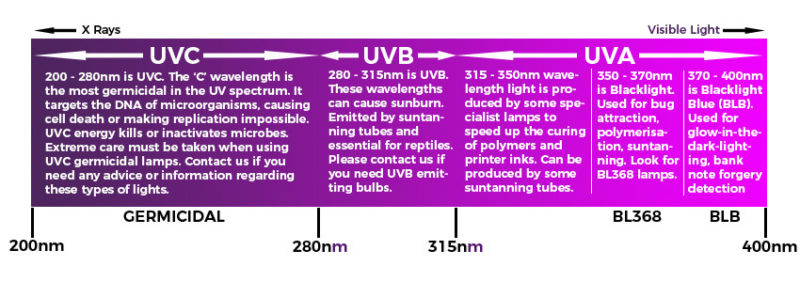
UV disinfection technology has improved drastically throughout the years – most recently with the integration with LED light systems. Before, UV disinfection lights could only be run in empty rooms that were sealed off from human contact. While these lights were certainly effective at sanitization, the rooms would be unsterilized as soon as people entered and the system would turn off.
Now – the latest UV-C sanitization methods are combined with LED lights and operate as continuous purification systems, while keeping rooms both well-lit and sanitary. This means that it can be used 24/7, especially in areas where germs can be spread easily – like hospital rooms, schools, or office spaces.
How Does a UV Light Air Purification System Work?
The microbes in the air must come into contact with UV-C rays for the disinfection process to work. UV light air purification systems use fans to draw in non-sanitized air. This air is then circulated through filters to catch any large particles of dust so only microbes, fungi, and airborne bacteria enter into the purification system.
This air then enters into a chamber with a high intensity UV-C lamp – which emits wavelengths that kill or immobilize airborne pathogens. Clean air is dispelled back into the room on the other side of the system.
Government Standards for UV Light Disinfection
The FDA has instituted several regulations for UV light disinfection and air purifiers. The organization recently released an enforcement policy4 for devices in response to the COVID-19 public health emergency. In order for a UV light air purification system to be approved by the government for use in public spaces, it must:
- Meet purification specifications and demonstrate effectiveness at removing specified particles
- Must emit no more than the maximum acceptable level of ozone5
- Pose no health risks with air flow emission or cause any potential site contamination
Any UV light air purification on the market must meet these standards.
The UV24 system not only meets these FDA standards, but it was also tested thoroughly by the Bovie Medical scientific research center. The report states that this system exhibited “superior performance6” for “high levels of air disinfection.”
Does UV Light Kill Bacteria?

UV rays have the ability to kill microorganisms (like bacteria) by altering the DNA within the nucleic acid cells. This prevents the cell from growing or reproducing, rendering it inactive. UV-C are the only types of UV rays with the ability to kill bacteria, viruses, and fungi.
Since these organisms can
survive in the air, UV-C light can be used to kill airborne pathogens. However,
the air and surfaces within a room can quickly become re-infected as new
bacteria or viruses are brought in from other locations.
Continuous UV light air
purification systems circulate the air through the filtration device and
into a chamber with concentrated UV-C lights. This means that the air is
constantly being moved around and re-sanitized.
The Bovie UV24 Continuous UV-C air purification system – one of the leading UV light disinfection systems – is comprised of four main parts:
- UV24 Unit
- UV-C lamp
- MERV 6 filters
- LED lamps
The UV24 unit is what holds all of the filters and lamps together, and it is designed to be installed in the ceiling with brackets.
They appear to look like typical fluorescent light fixtures, with ventilated openings on either side.
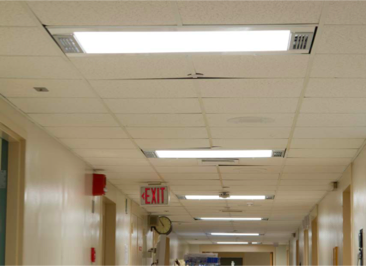
The UV-C lamp is inside of the unit so no harmful UV rays are emitted. This creates an ultraviolet germicidal irradiation (UVGI) chamber that air is circulated through and disinfected.
There are also four MERV (Minimum Efficiency Reporting Value) 6 filters inside of the system. These filters prevent larger particles of dust, pollen, or mold spores from entering into the UVGI chamber so only bacteria, fungi, and viruses go in.
Since UV-C rays are not visible to the human eye, the UV24 system also has an LED light installed on the exterior portion of the system. This is so they can be installed into rooms and used as a light source.
The Bovie UV24 Continuous UV-C air purification system can sanitize 50 cubic feet every minute. Just one system can purify the air in a 10’x 10’ x 8’ room four times every hour!
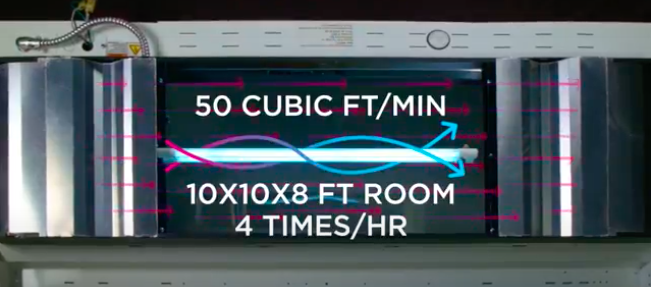
How Effective is UV Light Disinfection?
While UV-C light itself is proven to kill microbes, some UV light sanitization systems are more effective than others.
The Bovid UV24 Continuous air purification system has undergone thorough testing to measure the system’s effectiveness at killing different types of microbes and viruses.
According to the published report from Medical Illumination and NUVO, the UV24 air purification system removed 99 percent7 of all airborne pathogens – and it removed 100% of coronavirus microbes from the air.
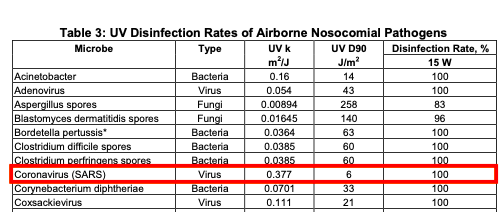
There are several factors that can influence the level of disinfection. For instance, the dosage level of the UV-C light, how long pollutants are exposed, and the material of the bulb emitting UV-C all play a role in the process. This is why some UV light disinfection systems are more effective than others.
Effect on Allergens
UV air purifiers cannot remove all allergens within the air, nor is it able to eradicate chemical fumes or gases, as these are unaffected by UV radiation. However, UV purification systems do help to reduce the amount of allergens within the air, which improves the air quality8 and can help allergy sufferers to breathe better.
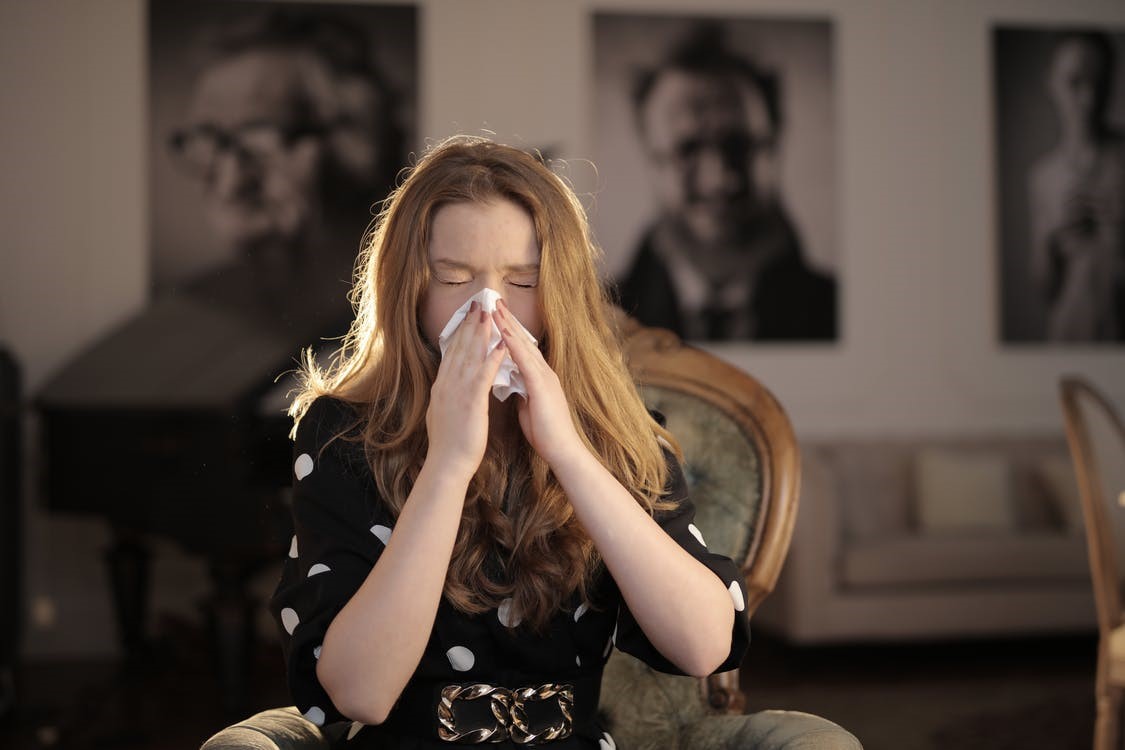
Effect on Micro-organisms
Micro-organisms (also called microbes) are microscopic organisms, which include bacteria, fungi, and viruses. Most micro-organisms are made up of just one cell or a small colony of cells. If these cells come into contact with a highly-concentrated dosage of UV-C radiation, they can be destroyed.
Some micro-organisms require longer periods of exposure than others. Some bacteria, viruses, and fungi tend to be more effected by UV radiation, while others (such as mold spores) can be harder to eradicate. This is why using a continuous system is the best option, since micro-organisms can be repeatedly exposed.
For example, the performance report on the Bovie UV24 system found that it was able to remove Staphylococcus bacteria from the air over a period of 24 hours. However, you can see there was a steep drop in the presence of bacteria within the first hour until it was completely removed over time.

What are the Benefits of a UV Light Disinfection System?
The main benefit of a UV light air purification system is that it can reduce the spread of diseases and continuously purify the air we breathe.
Since UV-C is proven to effectively kill over 99% of bacteria, viruses, and other pathogens, this is one of the best systems for air sanitization.
Reduces Settling Contaminants
Continuous UV light disinfection systems work around the clock clearing harmful bacteria from the air. As a result, this significantly reduces the pathogens, bacteria, and viruses that settle on surfaces – like tables, chairs, door knobs, furniture, and other areas that people have direct contact with.
Harmful bacteria, pathogens, and viruses – like COVID-19 – can survive on surfaces for days depending on the material.
According to WebMD9, the novel coronavirus can survive on surfaces for multiple days:
- Metal (doorknobs, jewelry, silverware): five days
- Wood (tables, decking): four days
- Plastic (bus seats, milk containers, elevator buttons): two to three days
- Stainless steel: Refrigerators, pots and pans, sinks) two to three days
- Cardboard (shipping boxes): one day
- Copper (pennies, cookware): four hours
- Aluminum (Soda cans, foil): two to eight hours
- Glass (drinking glasses, mirrors, windows) five days
- Ceramics (dishes, mugs, pots): five days
- Paper: a few minutes to five days
UV light disinfection can do wonders to eliminate contamination before it has the chance to settle.
Improves Air Quality and Odor Elimination
UV air purification systems work to effectively remove larger particles in the air, like dust, pollen, dander, and dirt. In addition to causing an odor, this can irritate people’s lungs and have an effect on their overall health.
By using a continuous air filtration system, most of these particles can be removed from the air, improving the quality and making it safer to breathe.
Improves Respiratory Health
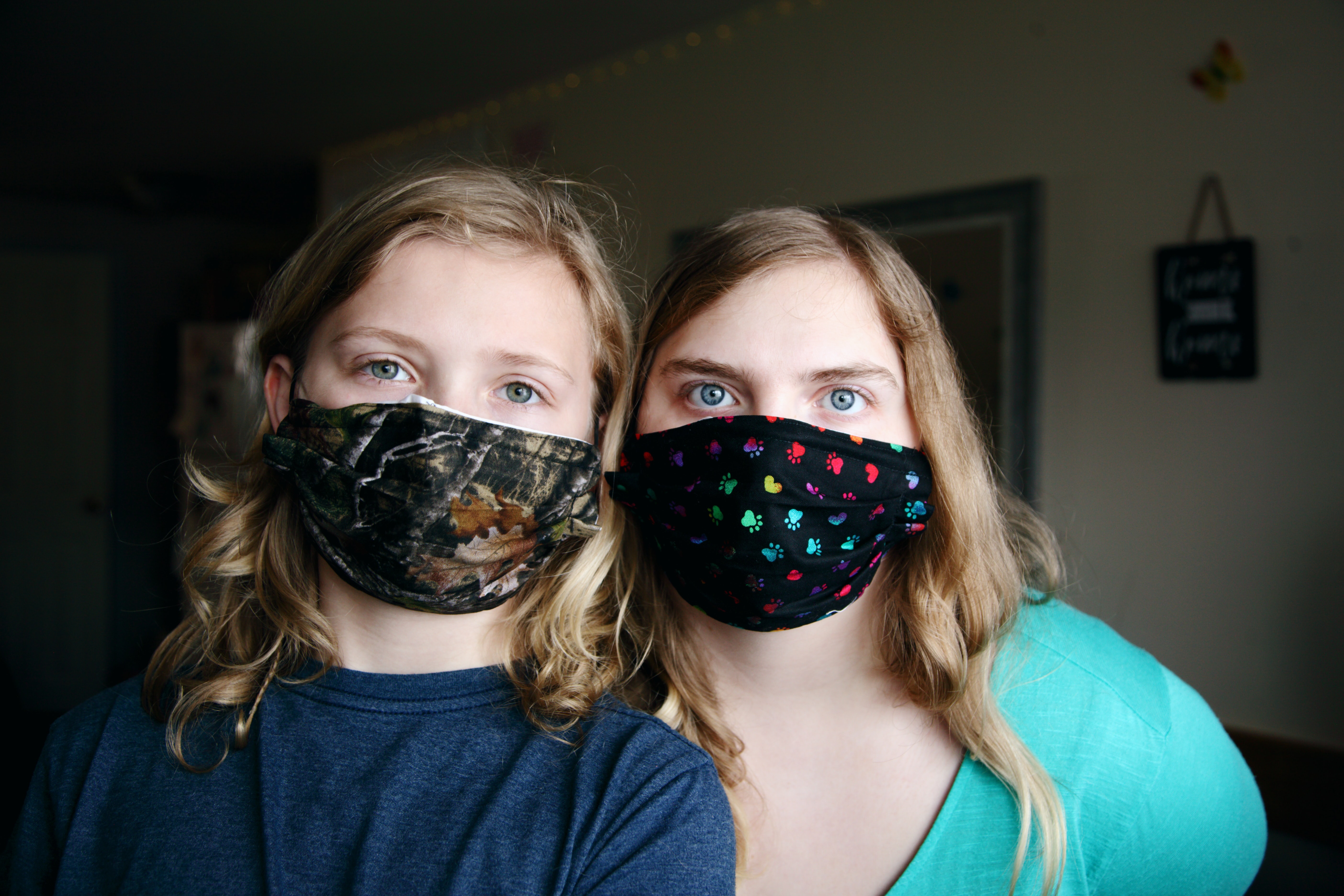
Once a virus, bacterial cell, or other pathogen enters the body through an air passage, it can start to grow within the host and potentially make that person ill. COVID-19, for example, can pass through the air and do severe damage to a person’s lungs and respiratory system once it enters the body.
Having a continuous UV-C air sanitizing system that can remove and kill these dangerous pathogens from the air makes any establishment a much safer place – particularly for people who are vulnerable to diseases or immunocompromised.
Businesses and public spaces can use continuous UV-C purification systems to reduce the spread of diseases and create a safe, sanitized space for people to congregate in.
People will be more aware than ever of bacteria, pathogens, and of course, viruses in the future. UV light disinfection will be extremely beneficial for businesses as they re-open post-pandemic. This could also help to eventually eliminate the need for people to wear facemasks in public places.
Easy Upkeep
UV light disinfection systems are extremely easy to operate after installation. The UV24 light is designed to function around the clock and only needs to be changed once a year. It is recommended to check the unit from time-to-time (quarterly) to ensure it’s working properly. All you need to do for this is turn off the UV lamp and check the indicator light.
How Much Does a UV Light Disinfection System Cost?
UV light sanitization systems can involve many factors – based on the building. Obviously, a commercial air purifier system is going to be a much bigger investment than that of a house or small business.
Furthermore, the quality of the materials (particularly of the UV-C light) impacts the effectiveness of the purification system. Regardless, the best air purification systems are a serious investment, but a very smart one.
One single UV24 light purification system can sanitize a space that is 10’ x 10’ x 10’ every 15 minutes. For rooms that are larger or need thorough sanitization (such as a surgical room), bigger systems may be needed.
For instance, a small room within a doctor’s office may need only one or two lights to fully clean the space. In order to effectively sanitize a large space (such as a waiting room, gym, or office space) several UV light sanitizers will be needed.
The pricing of the system also depends on the model that is installed.
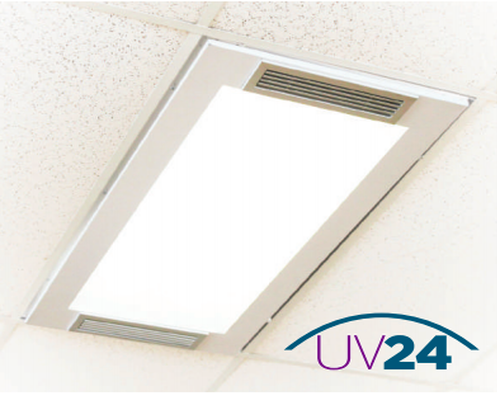
- If you choose to install a sanitization system without a light, the cost is $1,450 per unit.
- There is a mid-range option with florescent bulbs, which are $1,525 per unit.
- The most expensive LED light version is $1,950 per unit.
There is also a cost associated with installation, which will vary depending on the number of systems and labor required. Thankfully, these systems are fairly easy to install, so a basic electrician can handle the installation without any issues.
It is very important to understand the long-term benefits of installing a UV light sanitization system – particularly post-pandemic. These systems are operational right away, and only take a few hours to several days to install. If set up correctly, they will provide years of comfort and safety.
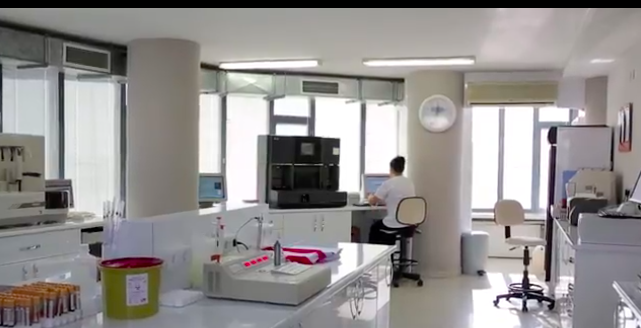
Customers and employees are nervous these days to enter businesses and people are scared to go into hospitals because of the risk of encountering a dangerous situation. If a building has a UV-C light filtration system in place, then it creates a much safer environment for customers, employees, or patients.
Who Stands to Benefit from UV Light Disinfection?
Everyone is vulnerable to pathogens – and some viruses (like COVID-19) can be deadly. Therefore, every single person can benefit from the use of UV light disinfection – as it will protect them from coming into contact with harmful bacteria and viruses.
Businesses and other establishments stand to benefit, too. Many companies and organizations like schools, theaters, and offices need to assure to the public that their locations are safe to enter. By using UV-C light sanitization systems, people can rest assured that these locations are safe and sanitary.
It’s a safe bet that people will be wary of entering buildings in general post-pandemic. Businesses can use this to their advantage and promote UV light disinfection systems for marketing purposes. Highlighting the fact that a business cleans the air 24/7 is a huge competitive advantage to put customers at ease.
Applications for UV light systems
In the past, UV light sanitization systems could only be used in unoccupied rooms. However, the Bovie UV24 is designed to be used continuously and is safe for running in rooms filled with people. This system has an optional LED light, so it can be installed in the ceiling of a room and provide a bright light source while filtering the air.

The UV24 can be installed in places where large numbers of people tend to congregate and where germs can be easily spread through the air. This includes (but is not limited to):
- Hospital rooms and hallways
- Waiting rooms
- Surgical rooms
- Nursing homes and assisted living homes
- ICU wings
- Dental offices
- Labs
- Restaurants
- Working Offices
- Retail locations
- Malls
- Grocery stores
- Bars
- Schools
- Oral surgery rooms
- Periodontist offices
- Endodontists offices
- Pediatrician offices
- Physician offices
- Physical Therapy offices

Maintenance: How to Maximize the Use of UV Light for Disinfection
Proper upkeep and maintenance are necessary to keep a UV light cleanser system running effectively. First, it is important that the system is mounted correctly – so be sure to refer to an installation guide10.
The Bovie UV24 system is designed to fit above the ceiling frame. An opening may need to be cut in order to fit the system properly. The power should also be shut off during installation and proper eye protection should be worn for safety purposes.
Over time, the UV lamp or MERV 6 filter will need to be replaced to improve the effectiveness of the sanitization system.
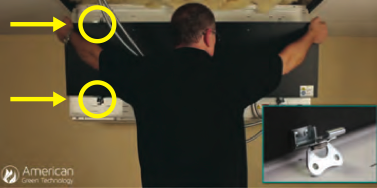
In order to replace the UV lamp, the cover for the UV chamber must be properly removed. There is a lock bar and four latches on the fixture that must be released to expose the UV chamber. The light must then be carefully removed by pulling on the metal sockets on either end. It is important that the glass portion of the light is not touched, as the glass can be easily scratched or damaged – compromising the effectiveness.
New UV lamps can be easily installed by proper insertion back into the UV chamber.
MERV 6 filters should also be replaced regularly in order to efficiently remove larger particles within the air. Eye wear protection is also recommended and filters must be disposed of properly as it contains hazardous waste materials.

To replace the filter, the door latches on the sides of the UV24 system must be opened. The filter slides out and a new filter can be installed in the same slot.
Your ability to maximize the use of a UV light disinfection system comes down to proper installation practices and maintenance. It never hurts to have a professional handle this task for you.
Future Outlook
For people to safely return to public spaces, new cleanliness guidelines will need to be put into place to prevent pandemics like the coronavirus from occurring again. Already, scientists and experts are predicting11 that businesses, schools, hospitals, and other gathering places will need to change their sanitization procedures post-pandemic.
Don Gilpen, president and CEO of the International Facility Management Association stated:
“There’s going to be a special effort to consider and think about every possible place within the built environment that a human being has touched and the possibility of that being a source of contamination.”
Experts recommend that buildings install high-quality air filtration systems and sanitize hard surfaces frequently to suppress the spread of viruses and bacteria.
Plain and simple, the future will almost certainly involve significantly stricter guidelines on sanitation worldwide. Utilizing a continuous UV light disinfection system can do wonders to create a far safer environment for everyone.
FAQs
How long does it take for UV lights to sterilize the air?
The time that it takes a UV-C light to kill micro-organisms depends on the intensity of the light as well as the proximity that it has to the pathogens. Since the UV24 system is compact, micro-organisms come into close contact with the UV-C lamp and can be killed quite quickly. Moreover, the filtration system is running constantly. This means the particles can be exposed multiple times until they are completely destroyed.
Are UV light disinfection systems safe for use around children, animals, or sick people?
Yes. UV-C sanitization lights are 100% safe for use in occupied rooms. The radiation from the lamp does not escape the UVGI chamber. As long as the system is properly installed and being used as directed, it is safe for all people (and animals) to be around.
Do UV sterilization systems make any noise?
Not really. There may be a slight humming noise from the fans within the system, but it is very quiet and often unnoticeable.
What do I do if my UV light breaks or stops working?
If you need any assistance with your Bovie UV24 system, you can contact the Medical Illumination trouble shooting assistance team by calling 1-800-831-1222. If you simply need to replace parts, such as the LED light or filter, you can contact a team member at PST Shop to order the correct item replacement part.
What safety precautions must be taken when using a UV sterilization system?
UV light air purification systems must be installed correctly to ensure the upmost safety and efficiency. The system must be properly reinforced within the ceiling and the lamps, bulbs, and filters must be installed correctly.
It is recommended to wear gloves and eye wear protection when cleaning the system or replacing any pieces. Prolonged exposure to direct UV-C light can cause irritation to the skin or eyes and should be avoided. However, UV-C does not produce radiation that is dangerous to humans.
Conclusion
The air we breathe every day is full of potentially dangerous pathogens and molecules that can affect our health. COVID-19 is just one example of how quickly viruses can spread across the globe. In the wake of the pandemic, air sanitization will be more important than ever before.
UV light disinfection is one of the most effective ways to eradicate 99% of the bacteria, viruses, and fungi in the air. It is also necessary for these systems to be running continuously so these areas do not become re-infected. With previous UV light sterilization systems, this was simply not possible – until now.
The Bovie UV24 is proven to be highly effective at removing pathogens from the air through filtration and UV-C light disinfection. It can be run continuously in any room to ensure that clean, germ-free air is constantly flowing – creating a truly safe and sterile environment.
If you have any further questions regarding UV light disinfection systems or would like to purchase a system for your business or home, please reach out to us at PST Shop. We would be happy to help you in any way possible!
